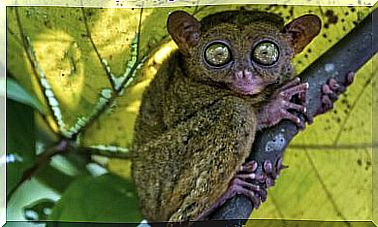The Snub-nosed Monkey Famous For Its Sneezes

Nature is more than curious and always surprises us. In this case, we will talk about the snub-nosed monkey, which is known for its strange way of sneezing and which, unfortunately, is in danger of extinction.
Snub-nosed monkey and his fear of the rain
Within the Rhinopithecus family we can find the Strykeri species, which lives in Burma and China – specifically in the vicinity of the Mekong and Salween rivers – and its population does not exceed 300 individuals.
They say that he is afraid of the rain, but what actually happens is that, due to the physiognomy of his nose ‘looking up’, the water enters through the nostrils and causes him many sneezes. The bad thing is that in the area where you live storms are common for most of the year.
When this happens, he hides his head between his knees and does not come out for several days, as if he is being punished for misbehaving. In this way, you avoid sneezing over and over again in a very curious way. The snub-nosed monkey is critically endangered due to loss of its natural habitat and indiscriminate hunting.
Other snub-nosed monkeys
The family is completed by four other species of snub-nosed monkeys, all of them endemic to Southeast Asia, between southern China and northern Vietnam:
1. Black snub-nosed langur
Its scientific name is Rhinopithecus bieti and it lives in Chinese territory. Not much is known about this flat-nosed monkey because it lives in an inhospitable area, between steep slopes, bamboo thickets, and foggy summers with poor visibility. However, this does not ‘save’ it from being in danger of extinction, and its population is quite scarce.
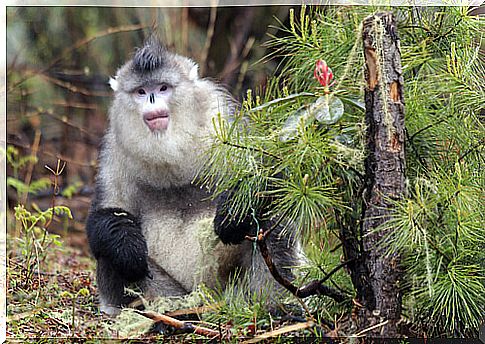
The black langur is large in size, its body is robust and it has a good amount of dark hair. The tail is almost as long as its torso. It forms groups of up to 60 individuals, which live in a territory of up to 135 km 2.
2. Tonkin Langur
Also known as the Dollman’s snub-nosed monkey, this species is endemic to northwestern Vietnam, in a wooded area not easily accessible to humans. Currently there are about 250 specimens, so it is said that it is critically endangered.
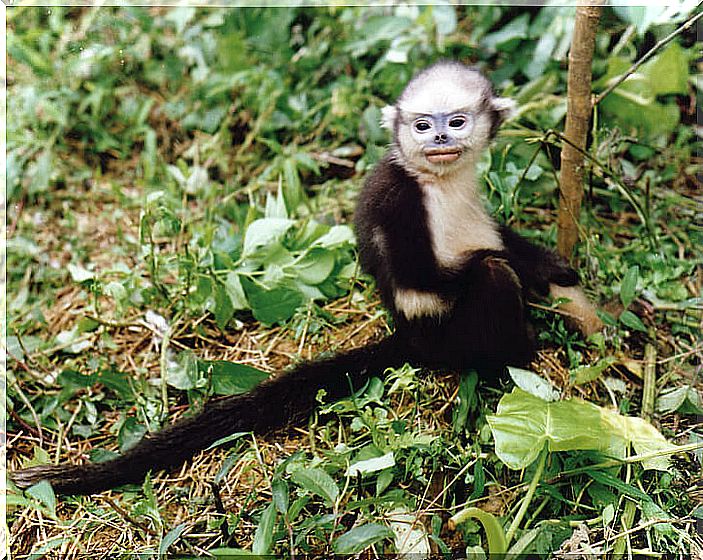
3. Gray snub-nosed langur
This Catarrhine primate lives in China, where it is known as the Guizhou Golden Haired Snub-nosed Monkey. Only about 750 specimens remain in the wild, in a territory of 400 km 2 between mountains more than 500 meters above sea level.
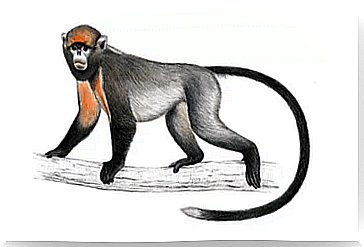
4. Golden flat langur
It is Rhinopithecus roxellana lives in the Hengduan, Qinling and Shennongjia Mountains in China, near the Yellow and Yangtze rivers. It prefers forests at a height higher than 1,400 meters above sea level and spends most of the day in the trees, mainly the females.
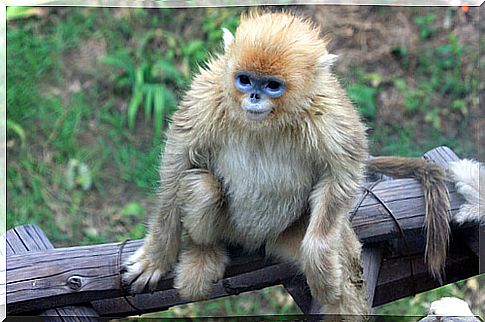
A male has a harem of up to six ‘wives’ and their young, which reach maturity at four years for females or seven for males. A curious fact about its fur is that its body is yellow and gold with bluish spots on its face.
The snub-nosed monkey is well known in China and Vietnam, and even the locals call it ‘nwoah’, which means ‘monkey with the face turned upwards’ in clear allusion to the position of its nostrils.
Of small size in general and a head that seems ‘hidden’ between so much hair, these primates are part of the local culture, although there are fewer and fewer specimens in the wild.

